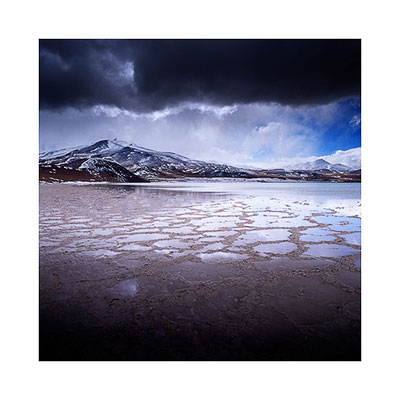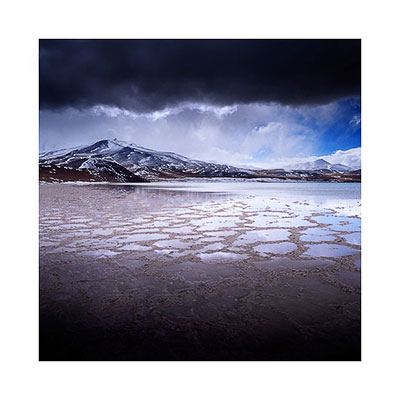For a long while now, I've been saying that I feel there is little difference in approach between post-editing (I dislike this term), and the initial image creation. Well, there is a difference - the difference is that we treat them differently. The difference is in our attitudes to how we consider and reflect during these two states of being.
When I'm working behind my computer monitor in my studio, I am looking at a photograph. When I am out in the field making images and looking through my viewfinder, I am also aware that I am looking at a photograph - only, I have to go through some kind of abstraction to do this. I've been doing this for a while now, that I see no difference between the making of an image, and the editing of one. They both require the same skills: ultimately it boils down to noticing shapes and tones and elements within the frame. Whether they are 3D real objects in the real world, or a collection of shapes and tones on a screen is irrelevant. Or so it should be.
But consider the image in this post. I've got two versions of it. The original, and an edited version. The difference between the two is that in the edited version, I've removed the break in the cloud in the top left-hand corner of the frame as well as its corresponding reflection in the salt flat.
It's all very easy to see how this image could be improved by removing this 'blot' in the image, and so often I find that books or articles on websites show us this technique, but none discuss how we should train ourselves to notice these distractions or 'flaws' at the point of making the exposure. Which is to say, most articles discuss how to 'fix' an image, but few discuss how to avoid this error in the first place. Because by avoiding it, it means we have a better awareness of what is going on, and thus, have a keener eye for making better images.
Back to my original point: I see no distinction between editing back in my studio, and the creation of the image whilst out in the field. I've discovered that all the time I've invested in working on images and editing them at home has improved my eye to notice distractions like the break in the cloud at the point of exposure. In general, when I am out in the field, I am thinking not about clouds and sun breaking through, but more about tonal relationships and relationships between shapes in the landscape. If my eye is well practiced in this pursuit, I would notice the break in the clouds and figure that it is distracting. I would not make the exposure, either waiting for the break to dispel, or re-composing as best to remove it all together.
But as much as I hate to admit it: I'm not infallible. I still have a long way to go with my own photography, because photography is all about awareness, and I sometimes let a little issue like this break in the clouds slip through the net. I would say that I often notice issues like this whilst in the field.
I think this is definitely one of those cases where living with a new image for a few weeks, or in this case, several months, has allowed me to grow irritated by this anomaly. What appeared to be ok to me at the time I first edited this image, now rubs me up the wrong way. This has only happened because I've had time to live with the work, and eventually begin to see it for what it is, rather than what I tricked myself into believing it was.
So there are perhaps three things to consider in this post:
1) Always leave some time between the shoot and the edit before you work on the images, as this will give you greater objectivity
2) Once edited, live with the work for some time, so you can learn to see all its facets, it's perfections and imperfections. This too, will give you greater objectivity, and you will learn a few things about yourself in the process. For me, I learned that I still don't often see all the issues in an image until much, much later on. I still have a long way to go in closing this gap between image creation and the editing stage.
3) Noticing the break in the cloud while looking at the image a few months down the line, has taught me to be more observant to these issues while out creating the images in the field. My time behind my computer has taught me what to look out for and observe more while making the original capture. As I said at the beginning of this post: there should be little difference between our time behind our comptuter screens and our time out in the field. We need to be able to interpret scenes as scenes, whether it is real and in front of us in all it's 3D glory, or whether it is a 2D representation on our computer screens. We are dealing with shapes and tones always. There is no difference. What we do and learn behind our computer screens should feed back into our time out in the field. That's why I abhor the term 'post-processing', because it encourages the attitude that there is a distinction between the two. There is no distinction. There is only shapes and tones.
The only difference between the two states of 'being' is that we think there's a difference. We are masters at deceiving ourselves.


